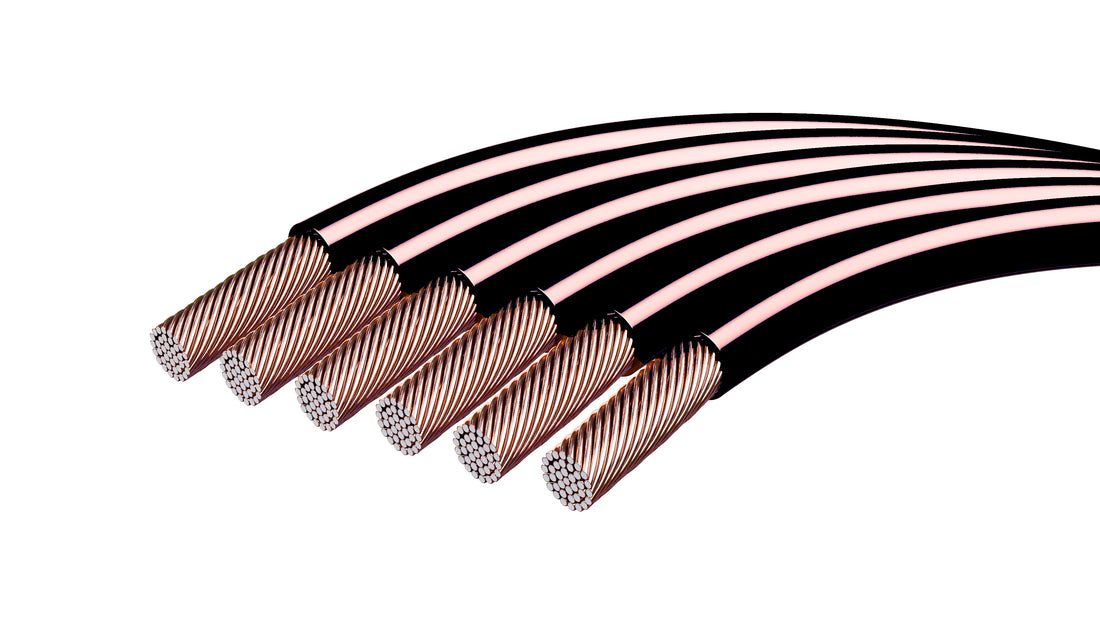
Understanding What the Black Wire Means in Electrical Systems
Share
Introduction
Welcome to our comprehensive guide on understanding the black wire in electrical systems. Whether you're a homeowner, a DIY enthusiast, or someone just curious about electrical wiring, this blog post is here to shed light on the crucial role that black wires play in your home or workplace electrical systems.
The purpose of this post is to demystify the black wire, which is often a point of confusion for many. By the end of this article, you'll have a clear understanding of its meaning, function, and how to handle it safely.
Don't forget to look at our other articles:
- What Does The Red Wire Mean?
- What Does The Blue Wire Mean?
- What Does The Green Wire Mean?
- What Does The Yellow Wire Mean?
- What Does The White Wire Mean?

1. Basics of Electrical Wiring
Before diving into the specifics of the black wire, it's essential to grasp some basic concepts of electrical wiring. Electrical systems are complex, but understanding the fundamentals can make working with them much safer and more straightforward.
One of the first things to know is that electrical wires come in various colors, each serving a different purpose. These colors help electricians and DIYers identify the wire's function at a glance, reducing the risk of errors and accidents.
When dealing with electrical systems, safety should always be your top priority. Here are a few general safety precautions to keep in mind:
- Always turn off the power at the circuit breaker before working on any electrical system.
- Use insulated tools to protect yourself from electric shocks.
- Wear rubber-soled shoes and avoid working in wet conditions.
- If you're unsure about any aspect of electrical work, consult a licensed electrician.

2. What Does the Black Wire Mean?
In the world of electrical wiring, color coding is standardized to ensure consistency and safety. The black wire is one of the most common colors you'll encounter, and it holds significant importance in electrical systems.
In most standard electrical systems, especially those following the National Electrical Code (NEC) in the United States, a black wire is typically used to signify "hot" or "live" wires. These wires carry current from the power source to various devices and outlets within a circuit.
It's important to note that color coding standards can vary depending on regional regulations. For instance, in some countries, black wires may have different roles or be replaced by other colors. Always double-check the standards applicable to your region before working on electrical systems.

3. Primary Function of the Black Wire
As mentioned earlier, black wires are generally used as hot or live wires in electrical systems. But what exactly does this mean? Let's dive a little deeper into their primary function.
Black wires carry electrical current from the power source (such as your breaker panel) to various devices and outlets within a circuit. This current is what powers your appliances, lights, and other electrical devices. Essentially, the black wire is responsible for delivering the electricity needed to keep your home or workplace functioning.
When you flip a light switch or plug in an appliance, the black wire is the conduit through which electricity flows, enabling the device to operate. Without the black wire, the electrical circuit would be incomplete, and your devices wouldn't receive the power they need.

4. Common Uses for Black Wires
Black wires are incredibly versatile and are used in a variety of applications within electrical systems. Here are some common scenarios where you'll find the black wire in use:
Appliance Connections
One of the most common uses for black wires is in connecting appliances. Whether it's a refrigerator, oven, or washing machine, black wires are often used to carry the electrical current from the power source to the appliance.
Switches and Outlets
In residential and commercial settings, black wires are frequently used to connect switches and outlets. When you flip a switch to turn on a light or plug in a device, the black wire is responsible for delivering the current needed for operation.
Light Fixtures
Black wires are also commonly used in light fixtures. They carry the electrical current from the power source to the light bulb, enabling it to illuminate your space.
Circuit Distribution
Within a circuit, black wires play a crucial role in distributing electricity. They connect various components and ensure that the electrical current flows smoothly from the source to the end device.

5. Safety Considerations
Working with black wires, like any part of an electrical system, requires caution and proper handling to ensure safety. Here are some essential safety tips to keep in mind:
Turn Off Power
Before working on any electrical system, always turn off the power at the circuit breaker. This step is crucial to prevent electric shocks and accidents.
Use Proper Tools
Invest in quality, insulated tools designed for electrical work. These tools provide an extra layer of protection against electric shocks.
Wear Safety Gear
Wearing rubber-soled shoes and other safety gear can reduce the risk of electrical accidents. Always ensure that your work area is dry and free from moisture.
Consult a Professional
If you're unsure about any aspect of electrical work, it's always best to consult a licensed electrician. Professional guidance can prevent costly mistakes and ensure your safety.
Conclusion
In this blog post, we've explored the essential role of the black wire in electrical systems. From its meaning and primary function to common uses and safety considerations, we've covered everything you need to know about this critical component.
Remember, safety should always be your top priority when working with electrical systems. By following the tips and guidelines provided, you can handle black wires confidently and safely.








